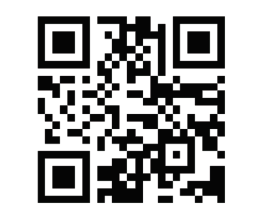
Features
From Boiler Room to Board Room
Standardizing utility bill information could be a key to greater understanding of energy use and management.
June 25, 2020 By David Arkell

We all know now that small measures can have huge impacts. Our world has been turned upside down by a scrap of genetic material called the COVID-19 virus.
Can microscopic measures also have positive outcomes? Yes! I believe that tiny scraps of code can also make the world better.
Let me give you an example all energy managers can readily appreciate. Reducing the carbon emissions that are disrupting our planet’s climate starts with knowledge—knowing how we can use energy differently.
We harness fossil fuels to heat and power our facilities, run our systems and fuel our fleets—energy that is delivered to us by utilities and energy suppliers. Being able to take preventative action on climate begins with exploiting the information those utilities send us each month in their bills.
For the vast majority of energy users, utility bill information is hard to interpret or act on. Data is not consistently reported from one utility (electric, gas or water) to the next.
Executives do not have, in fact they have never had, an easy way to measure and manage their companies’ energy use and energy performance. What cannot be measured cannot be managed.
The biggest obstacle to boardroom participation in energy management is getting information that is easy to understand and use for setting accountability criteria.
Our firm operates across North America, and in every jurisdiction, we capture utility data so our customer executives and site-based energy teams know how much they are paying, what they are buying and how much they are consuming. Until they know this, they have no way to measure and value the changes their energy teams are making.
There is a significant cost to capture monthly bill data, check and correct errors, confirm revisions and manage information flow. Additionally, there is the cost of software development and report preparation.
It all adds up. A company wanting to effectively manage energy and carbon will annually spend thousands of dollars to mine and harvest data from utility bills. When energy consumers properly use their utility billing data, their annual consumption effortlessly drops 5%. But many businesses consider the cost of entry too high.
Imagine instead, a tiny piece of code—a quick response (QR) code—that accurately captures utility bill data. A QR code on each printed or electronic bill would easily enable apps and algorithms, developed by the market, to upload information directly into useable analytics tools.

A QR code would cheaply and quickly provide managers with critical utility data. The time consuming means required today would go the route of the rotary dial telephone.
In 2018, over $3 trillion in financial transactions were enabled by QR codes. My proposal is simply this: require an open and universal utility bill QR code to report all monthly utility data to energy consumers.
A QR code on every bill is a simple and elegant solution. Everyone, from the boiler room to the board room would more easily, cheaply and effectively manage energy use and tackle climate change.
Every energy manager would be able to easily capture and analyze company energy use. Every corporate team could start making measurable carbon reduction changes. This digital code removes a key barrier to action.
The QR utility bill is the tiny code, the microscopic but mighty action, that will move the world forward on climate.

David Arkell is CEO of 360 Energy, a management consulting firm helping clients achieve organizational excellence through energy strategies and carbon solutions. For further information, questions or comments on this article, contact him at (877) 431-0332 or David.arkell@360energy.net.
Print this page